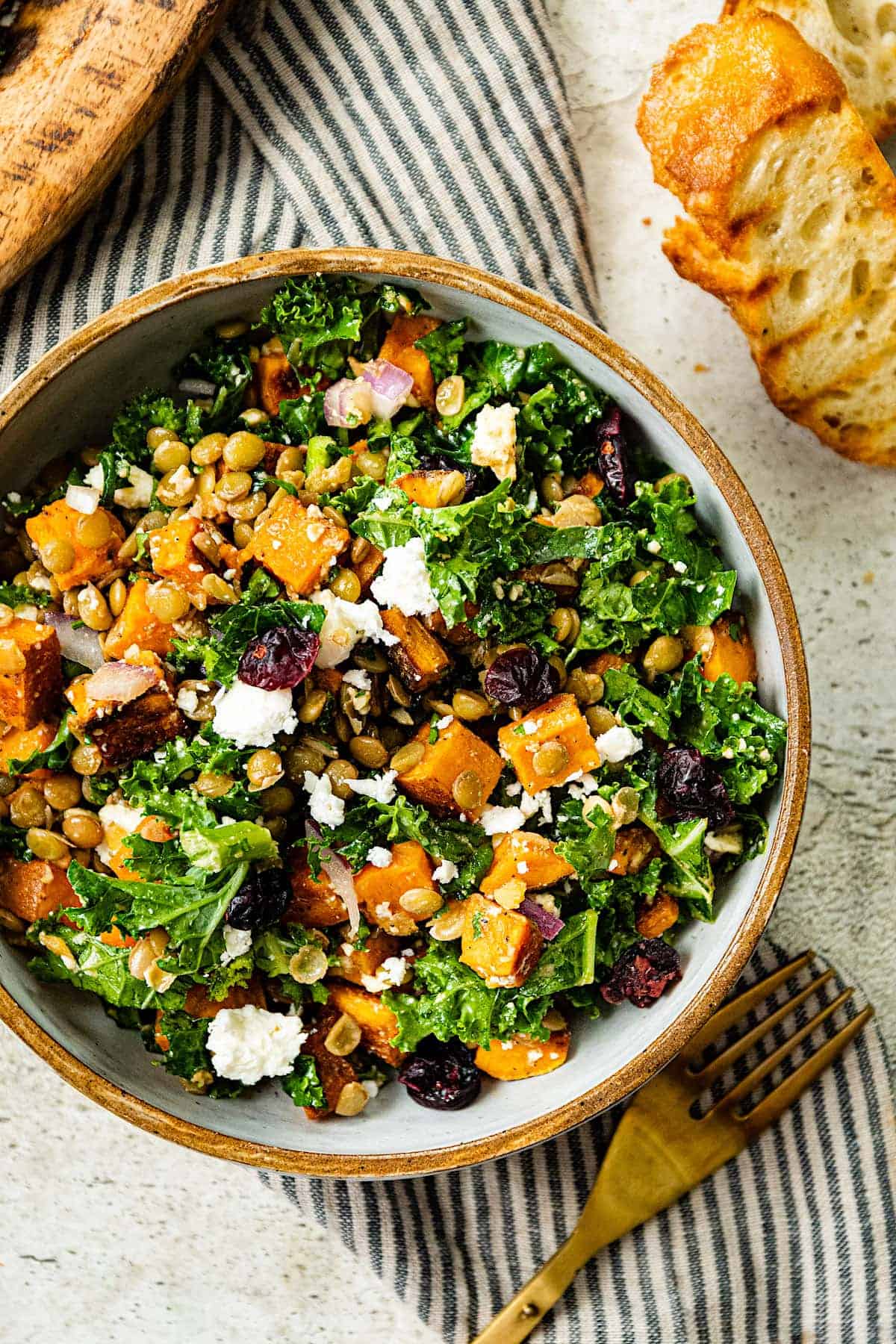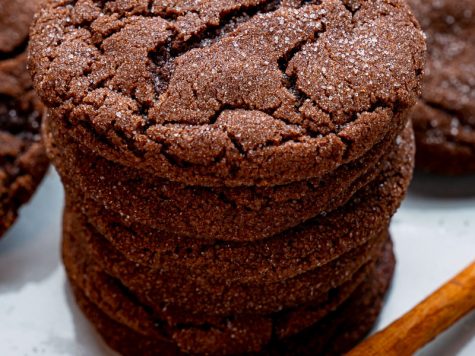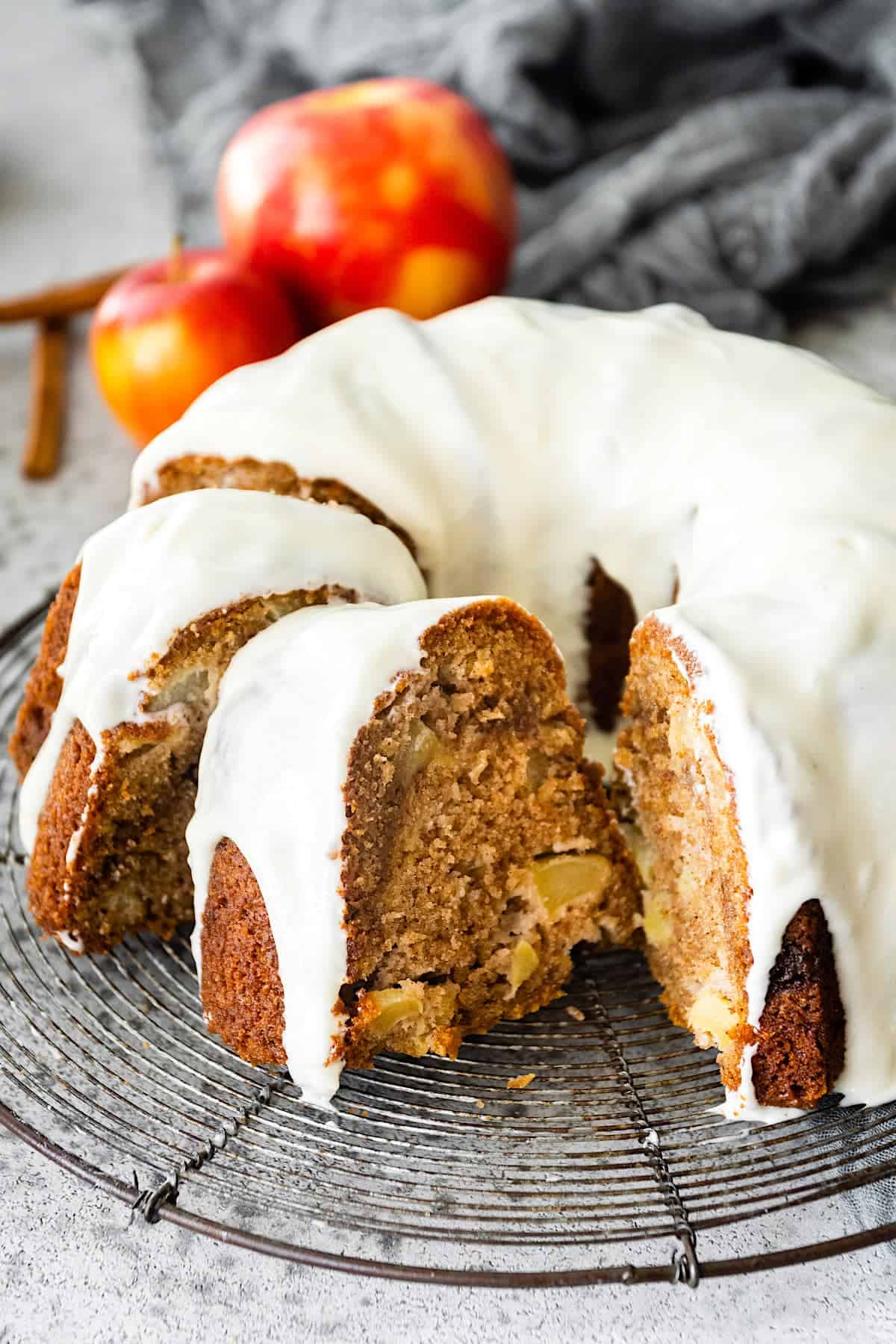This post may contain affiliate links. Read our disclosure policy.
This best chimichurri recipe is all at once citrusy, tart, garlicky, herby, and a tad bit spicy and it makes a great marinade or topping for chicken, steak, fish, or pork as well as potatoes and vegetables.
For more sauces and dips, check out my recipes for BBQ Sauce, Tzatziki, Chicken and Potatoes with Dijon Cream Sauce, and Roasted Red Pepper Sauce.
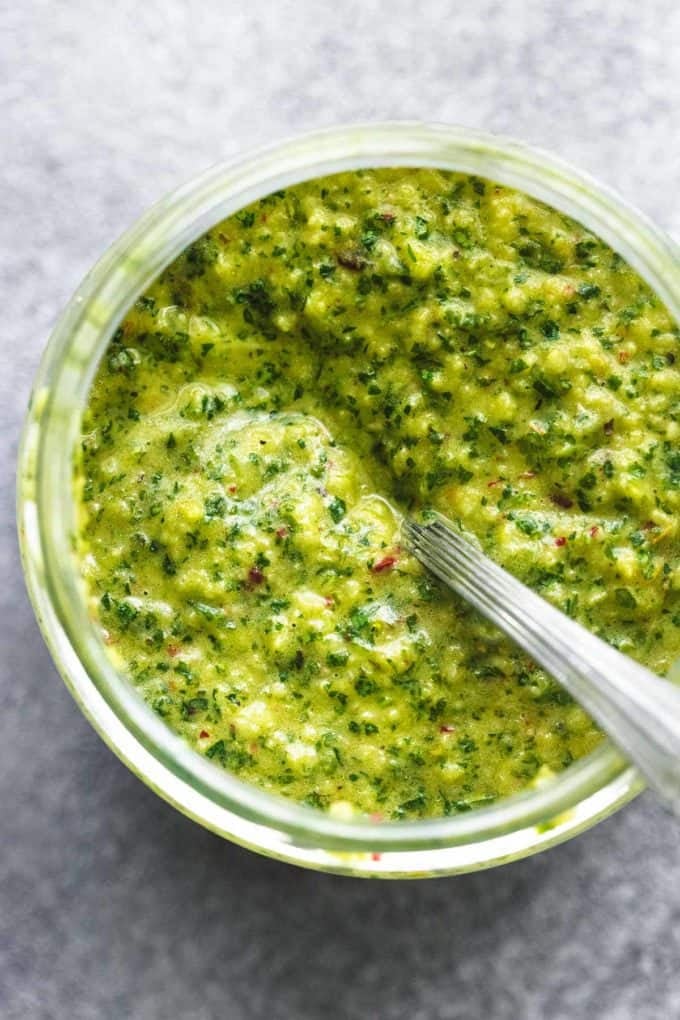
I love all the sauces. LOVE. However, I also consider myself a sauce connoisseur. What that means is I want only the best-tasting sauces making all my foods come to life. I’d wager that I’ve spent waaaay more time in the kitchen trying to perfect a sauce recipe than almost any other recipe.
This Argentinian chimichurri is no exception. I want it on all my meat dishes, my potatoes, my veggies, my sandwiches, my wraps, my eggs, as a salad dressing, as a dip…heck maybe even over my ice cream, I rule nothing out.
Why This Recipe Works
Different – This chimichurri recipe is a wonderful way to mix up your condiment routine. It might sound a little “out there” if you’re a tried-and-true, store-bought, basic sauces kinda person (I love those too!), but trust me, this is one sauce you’re going to want to make again and again.
Fresh herbs and spices – Chimichurri isn’t just fun to type and say. It’s also chock full of some of my favorite fresh herbs (cilantro, parsley), spices (garlic, salt, Italian seasonings, red pepper flakes), olive oil, and just enough red wine vinegar to give it that leeetle bit of tang that just makes it complete.
Keeps well – You can keep this chimichurri sauce for a couple weeks in the fridge. Or you can even keep at room temperature right after you make it for up to 24 hours. Just cover and leave to set right on your countertop.
Good on everything – I have used this chimichurri sauce for steak, on top of chicken, shrimp, tuna steak, tilapia, salmon, potatoes – you name it! It truly is good on everything.
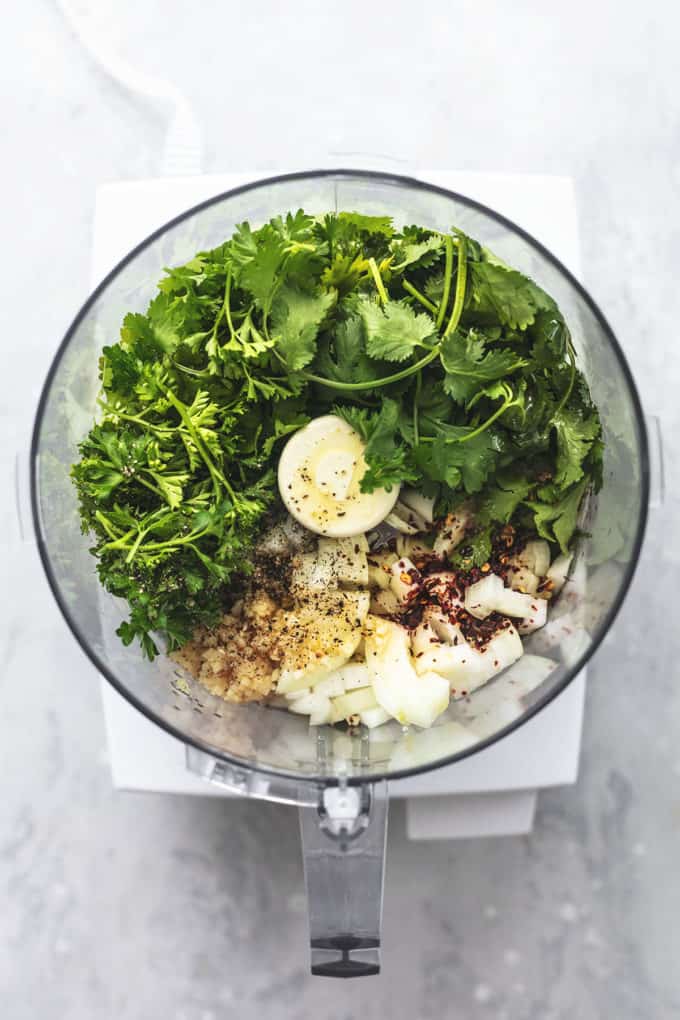
Here’s How You Make It
Ready for this? Here’s how you make this delicious Argentinian chimichurri sauce:
- Add all your ingredients to a blender or a food processor and pulse until smooth.
- Serve right away or store, covered, at room temperature for up to 24 hours before serving. Or you can put it in the fridge for up to two weeks.
Ta da! That’s it! Seriously? Seriously!
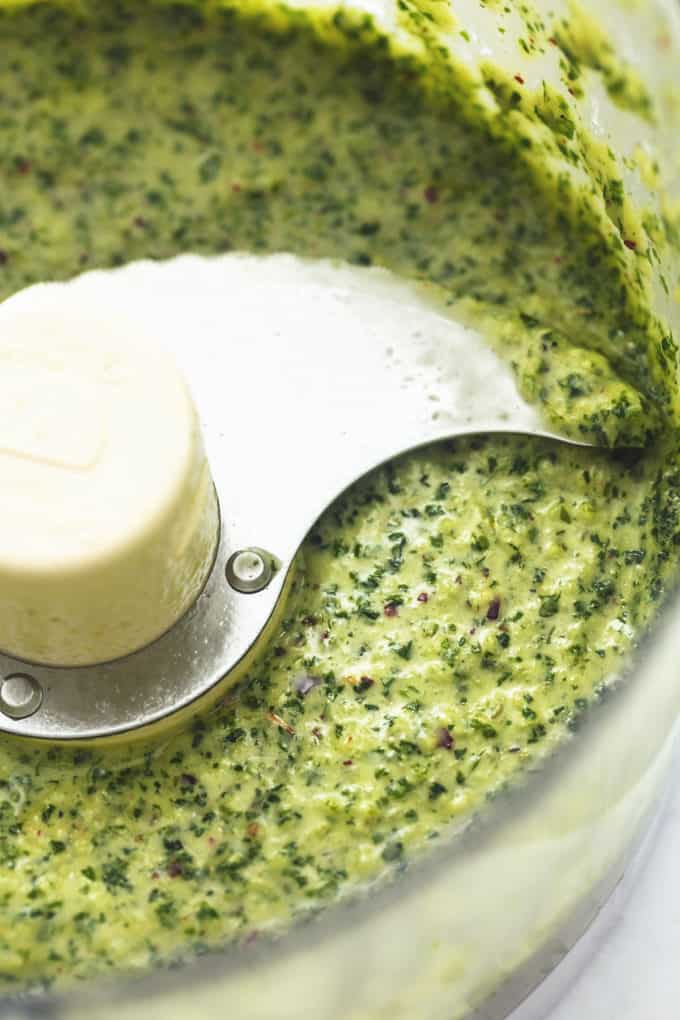
What is Chimichurri Sauce?
Chimichurri is a popular Spanish “raw” sauce used for both marinades and to cook in and as a condiment you add on the side of your dishes. Although it got its start in Argentina and Uruguay, its popularity has spread all over the globe, showing up in restaurants, the grocery, and even on some little ole blogger sites like mine.
Though there is both a green and a red version, this recipe is for the green chimichurri. Its ingredients are mainly chopped parsley and/or cilantro, garlic, olive oil, and spices. Some people (me) like to add red pepper flakes to spice it up a bit, but it’s not necessary that you do.
Once your sauce is made, you can use it to marinade any meat or fish, brush it on any protein as it comes off the grill or the stovetop, or serve it on the side as a dip or sauce.
What is the Difference Between Chimichurri and Pesto?
Pesto and chimichurri sound about the same right? Green sauce, primarily made of herbs, garlic, and oil that you don’t have to cook. However, there are some key differences.
Pesto is an easy sauce to make as well, but its primary ingredient is basil, while Chimichurri’s primary herb is parsley (and cilantro, in my case). Pesto also calls for both a cheese and nut component, typically parmesan and pine nuts. Chimichurri sauce, on the other hand, has a vinegar component while pesto does not.
Pesto is also often used on lots of pasta dishes, while chimichurri is used as a marinade for meat or as a protein condiment.
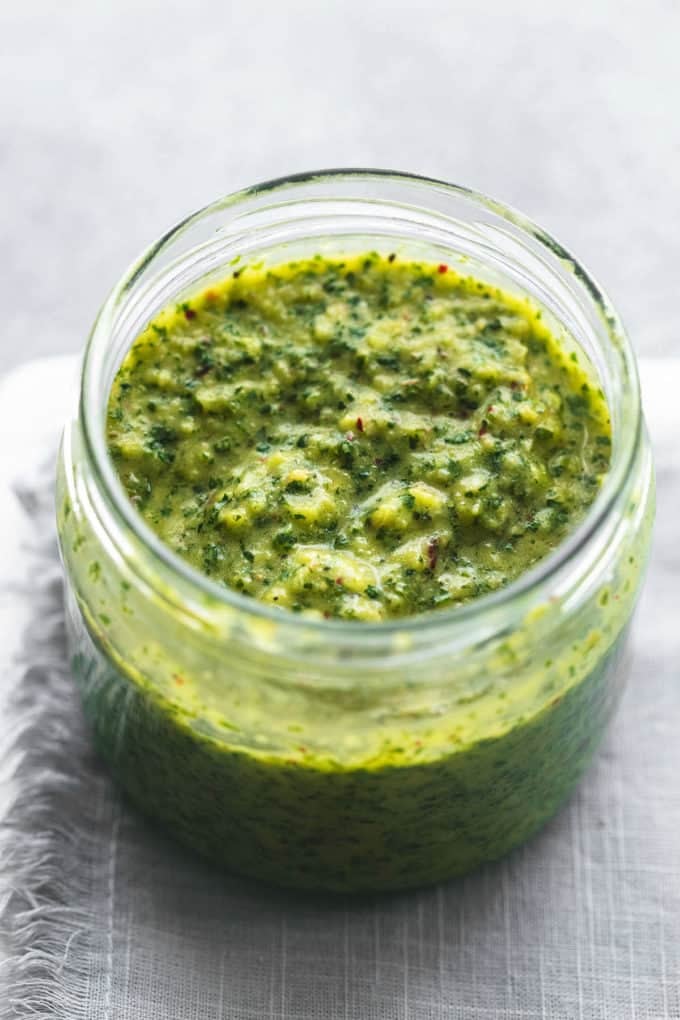
Expert Tips
- This recipe will yield about 1cup of chimichurri sauce. Double if you want to have some in the fridge for later (hint: you do).
- I like to make a full batch, divide it in thirds, and freeze two of the portions in half-pint jars for later. It’ll last a couple of months in the freezer! Just put it in the fridge overnight to thaw.
- While I prefer the resulting flavor and texture of the written method, combining all the ingredients in a food processor and blending until smooth. However, more traditional chimichurri sauce is simply stirred together with the oil stirred in last. Or you can make a hybrid version by pulsing all the ingredients in a blender or food processor except for the oil, then stir in the oil last. All three variations are delicious!
- Sometimes parsley can taste rather bitter. To avoid making a batch of Argentinian chimichurri that’s bitter, I’ll taste test the parsley first before I ruin a whole batch of sauce.
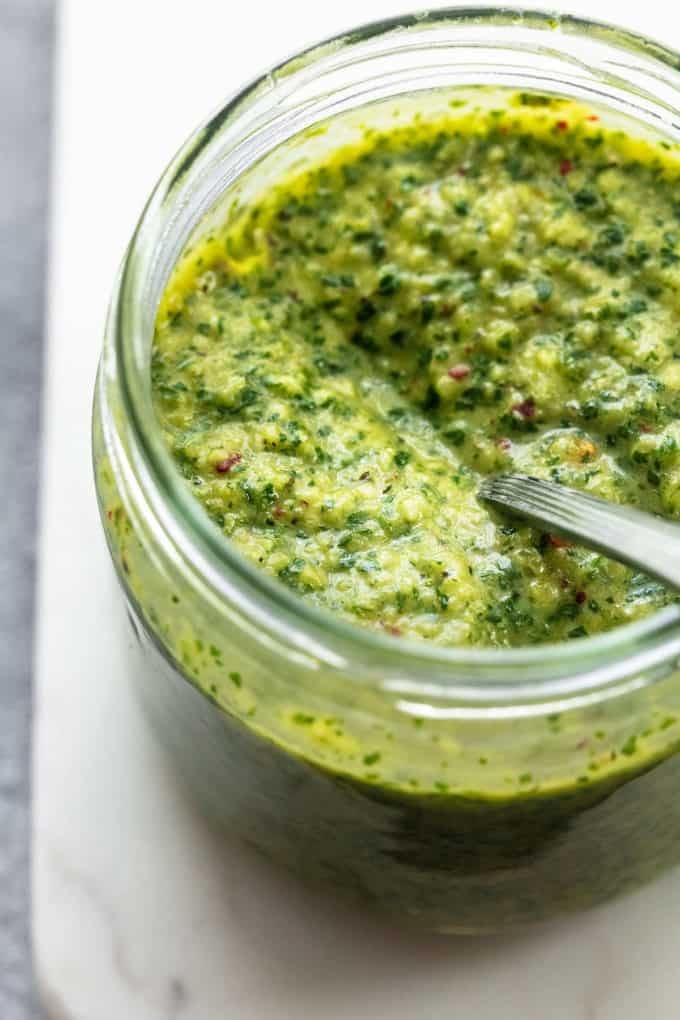
More Popular Recipes You’ll Love
Did you try this delicious Chimichurri recipe? YAY! Please rate the recipe below!
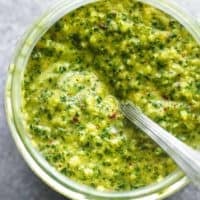
Argentinian Chimichurri Recipe
Argentinian Chimichurri sauce is a wonderful way to mix up your condiment routine. All at once citrusy, tart, garlicky, herby, and a tad bit spicy, this sauce makes a great marinade or topping for chicken, steak, fish, or pork as well as potatoes and vegetables.
Servings: 8 servings
Notes
I prefer the resulting flavor and texture of the written method – to combine all ingredients in a food processor and blend until smooth, however more traditional chimichurri sauce is simply stirred together with the oil being stirred in very last. A hybrid version can be made by pulsing all ingredients except for the oil, then stirring the oil in very last. All three variations are delicious!
Nutrition
Calories: 89 kcal, Carbohydrates: 1 g, Protein: 1 g, Fat: 9 g, Saturated Fat: 1 g, Trans Fat: 1 g, Sodium: 296 mg, Potassium: 43 mg, Fiber: 1 g, Sugar: 1 g, Vitamin A: 421 IU, Vitamin C: 6 mg, Calcium: 10 mg, Iron: 1 mg



